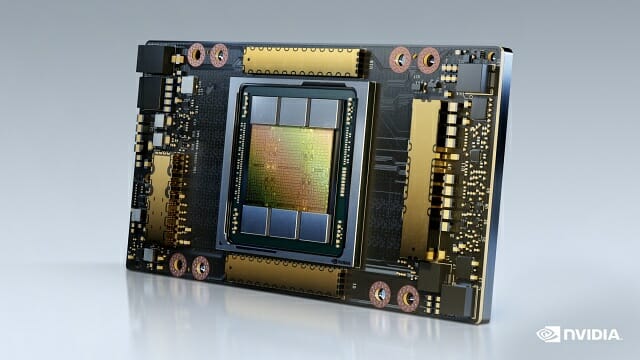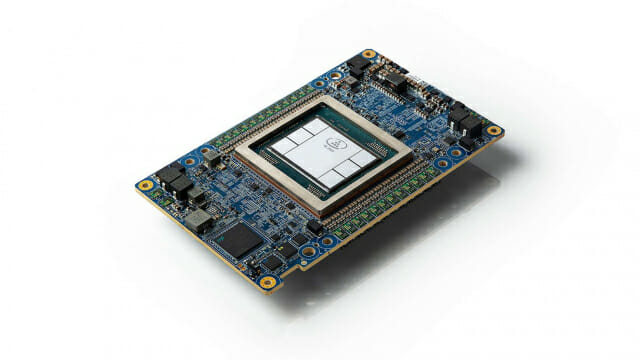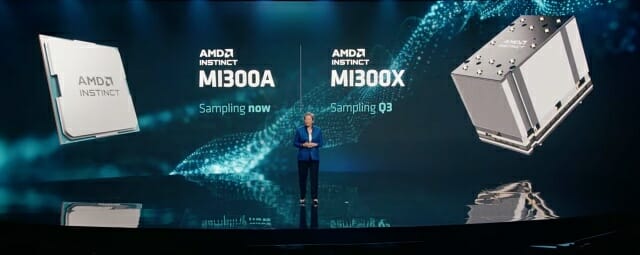Nvidia’s plans to supply three new graphics cards to the Chinese market while respecting the regulatory and performance constraints imposed by the American regulator are in trouble.
Nvidia had planned to deliver prototypes of the three GPUs this month, including the H20 SXM graphics card, a GPU intended for high-performance computing. Marketing was planned for next month. It is postponed to the first quarter of 2024.
The Californian giant was due to launch these new products on November 16. This launch should finally take place next February or March.
Difficulties integrating the chip into hardware
The reason ? According to Reuters, major server makers are having difficulty integrating the chip into their hardware.

Besides the H20 GPU, Nvidia planned to release two other chips whose specifications comply with the new US export rules, the L20 and L2.
The H20, L20, and L2 incorporate most of Nvidia’s new features for AI work, but some of the features have reduced power to comply with new US rules.

A800 and H800 chips do not pass
The memory bandwidth of these three GPUs is a maximum of 864 GB/s and the computing power is 296 TFLOPS (teraflops).
Nvidia is banking on the chips to preserve its market share in China after Washington’s toughened export rules barred it from shipping products such as the A800 and H800 AI chips.
The A800 and H800 chips were introduced as alternatives for Chinese customers in November 2022, about a month after the United States first banned exports of certain chips to China.
Intel relatively spared
GPUs for AI work produced by Nvidia and AMD have been banned from export to China without prior authorization from the US Department of Commerce’s Bureau of Industry and Security since November 17.
Affected products include the NVIDIA A100, A800, H100, H800, L40 and L40S GPUs, which are primarily used for AI and HPC (high-performance computing), and the GeForce RTX 4090, a PC graphics card.
Besides Nvidia, the US Department of Commerce also restricts the export of GPUs and accelerators from other manufacturers such as Intel and AMD.

Among Intel products, only the Gaudi 2 chip, intended for AI work, is included in the export restrictions to China.
Among Intel products, only the Gaudi 2 chip, intended for AI work, is included in the export restrictions to China.
The A770 card, the highest performing of Intel’s Arc A series graphics cards, has similar performance to the NVIDIA GeForce RTX 3060, which is a generation older. But she is not affected by the restrictions.

AMD’s server chips, the Instinct MI300 series, will be available early next month in China (Photo: AMD).
Major server vendors, such as Dell Technologies, are currently limiting the supply of AMD GPUs to the Chinese market. AMD is expected to launch the MI300 series next month, and there is no indication that it will launch a specialized product for the Chinese market.
The rise of Chinese AI players
In China, there is a trend towards local GPUs rather than US-made GPUs.
U.S.-imposed export restrictions have allowed local rivals such as Huawei to win orders that otherwise would have gone to Nvidia, whose graphics processing units (GPUs) dominate the AI market.
In October, Baidu ordered 1,600 Huawei-developed chips for the A to replace Nvidia’s A100 chips.

Moore Threads, a Chinese GPU startup founded by former Nvidia executives, recently distinguished itself by updating the drivers for its PC graphics card, the MTT S80.
“With the goal of developing the best GPU in China, we will strengthen R&D, improve performance through optimization, and build an ecosystem over the next three years,” CEO James Zhang said earlier this month.
Source: “ZDNet Korea”
